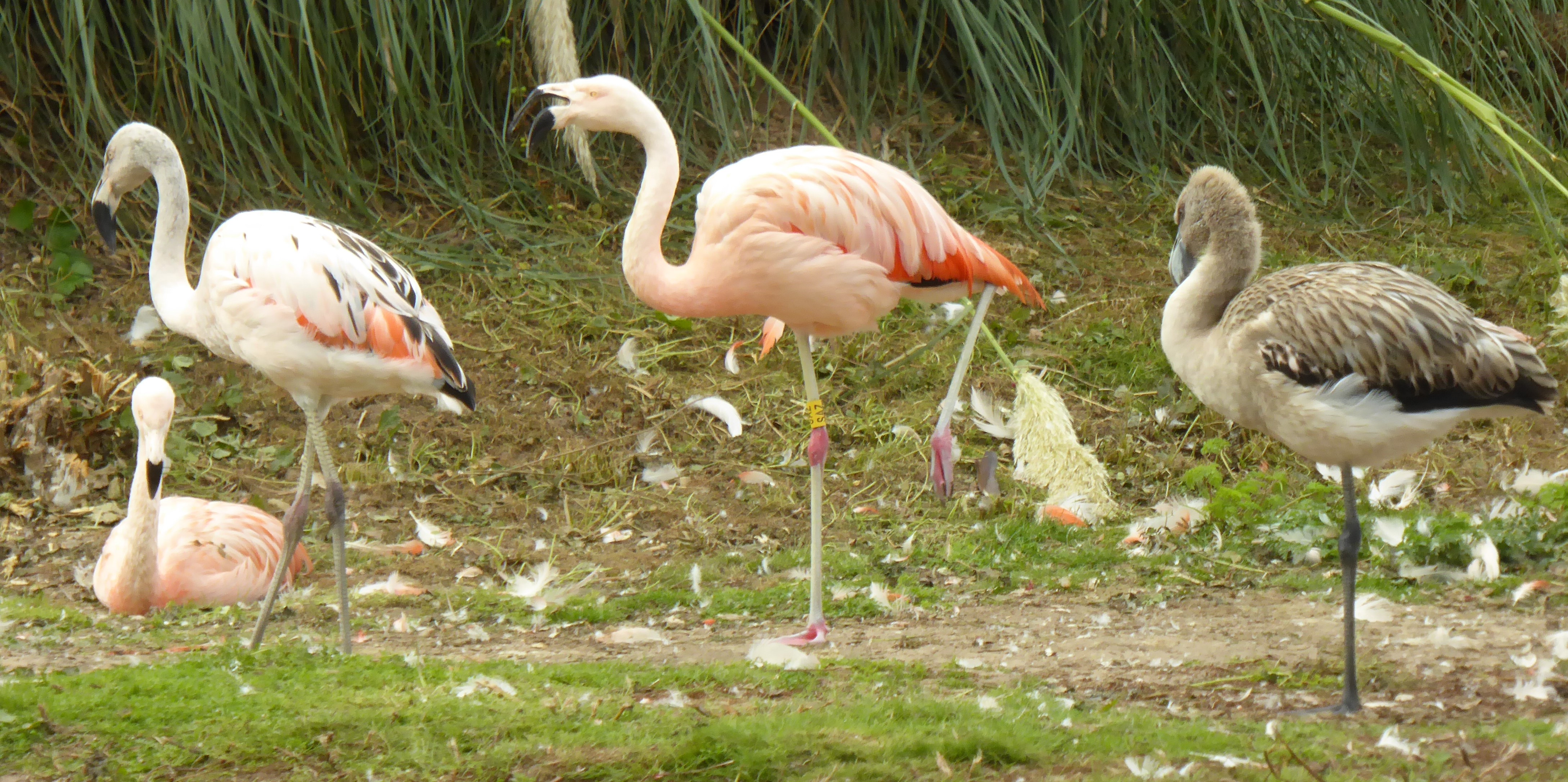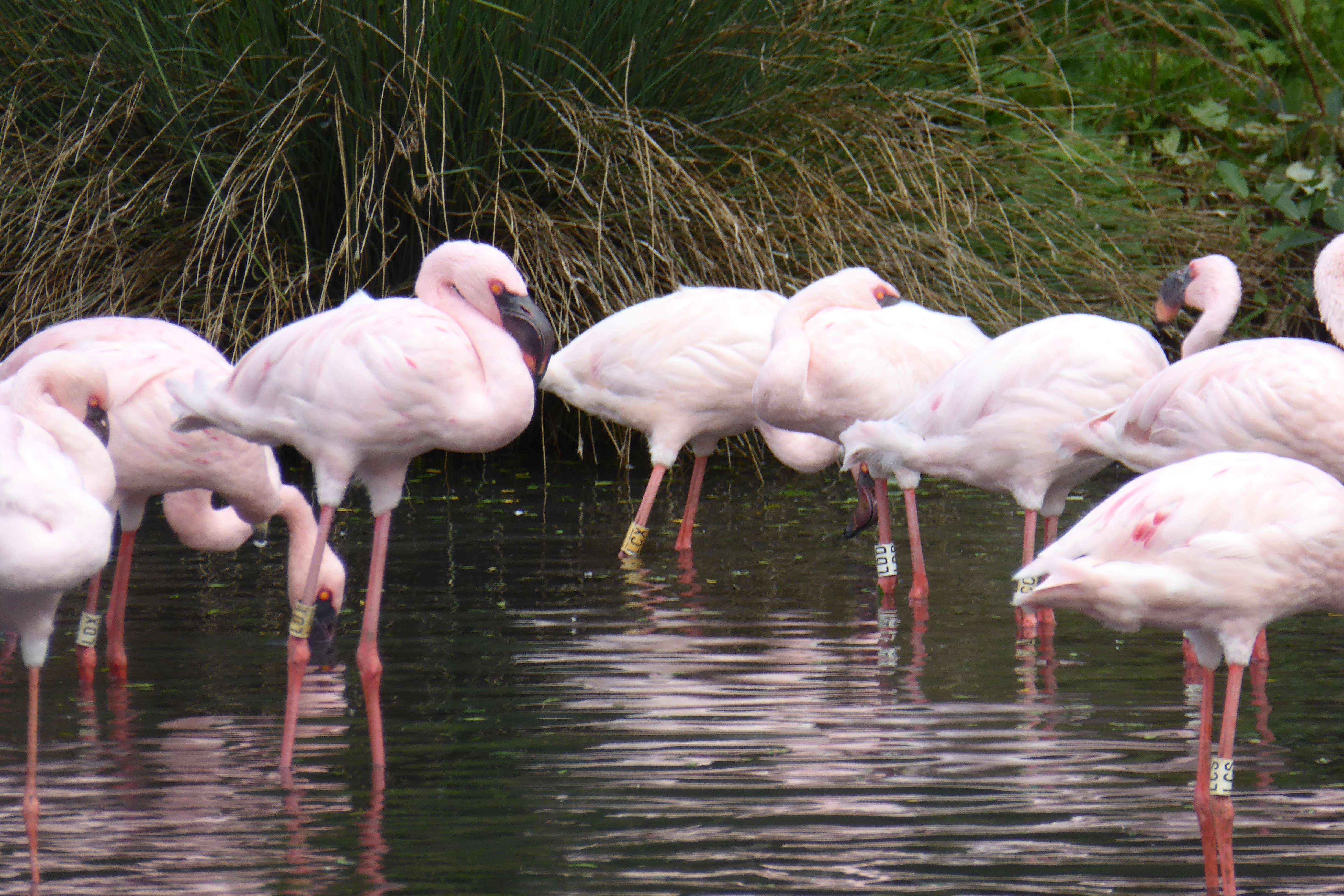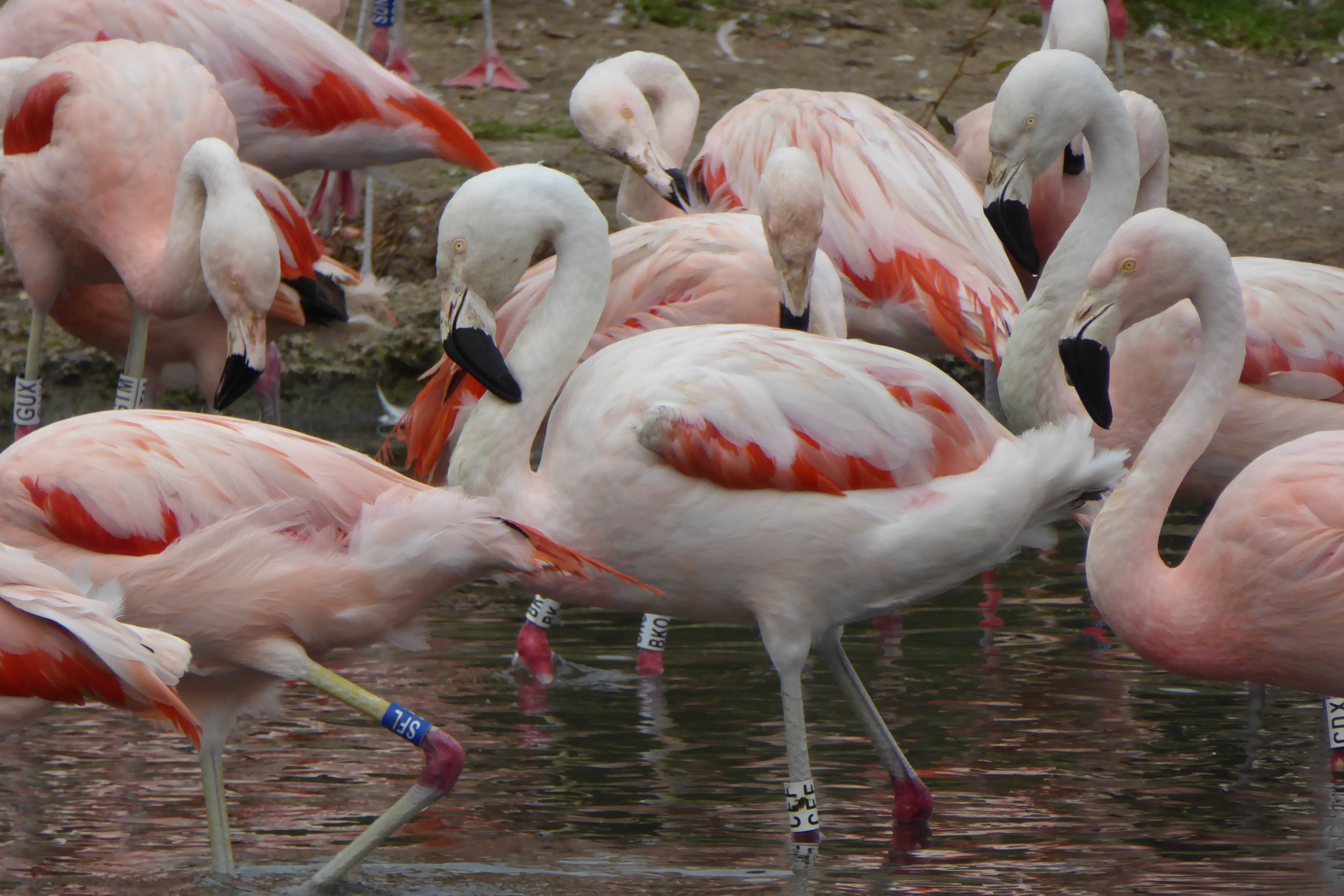There's more than just foster chicks going on
Autumn is generally a quieter time in the WWT flamingo flocks. Chicks are becoming well-grown and adults can "relax" as the breeding season winds down. The Andean-fostered Chilean flamingo chicks are still relatively fluffy, but chicks in the other flocks on well on their way to looking proper flamingo-shaped. They are also starting to develop more adult-like behaviours... The clip below shows one of the chicks in the Chilean flamingo flock practising filter feeding. Not as elegant as an adult but the idea is certainly there!
You can watch the chicks grow into adults by observing the changes in their feathers- pink ones appear first on their wings and appear as small pink smudges against their grey background. Also look at their bill shape too- this gets more and more curved as their filtering apparatus develops and grows.
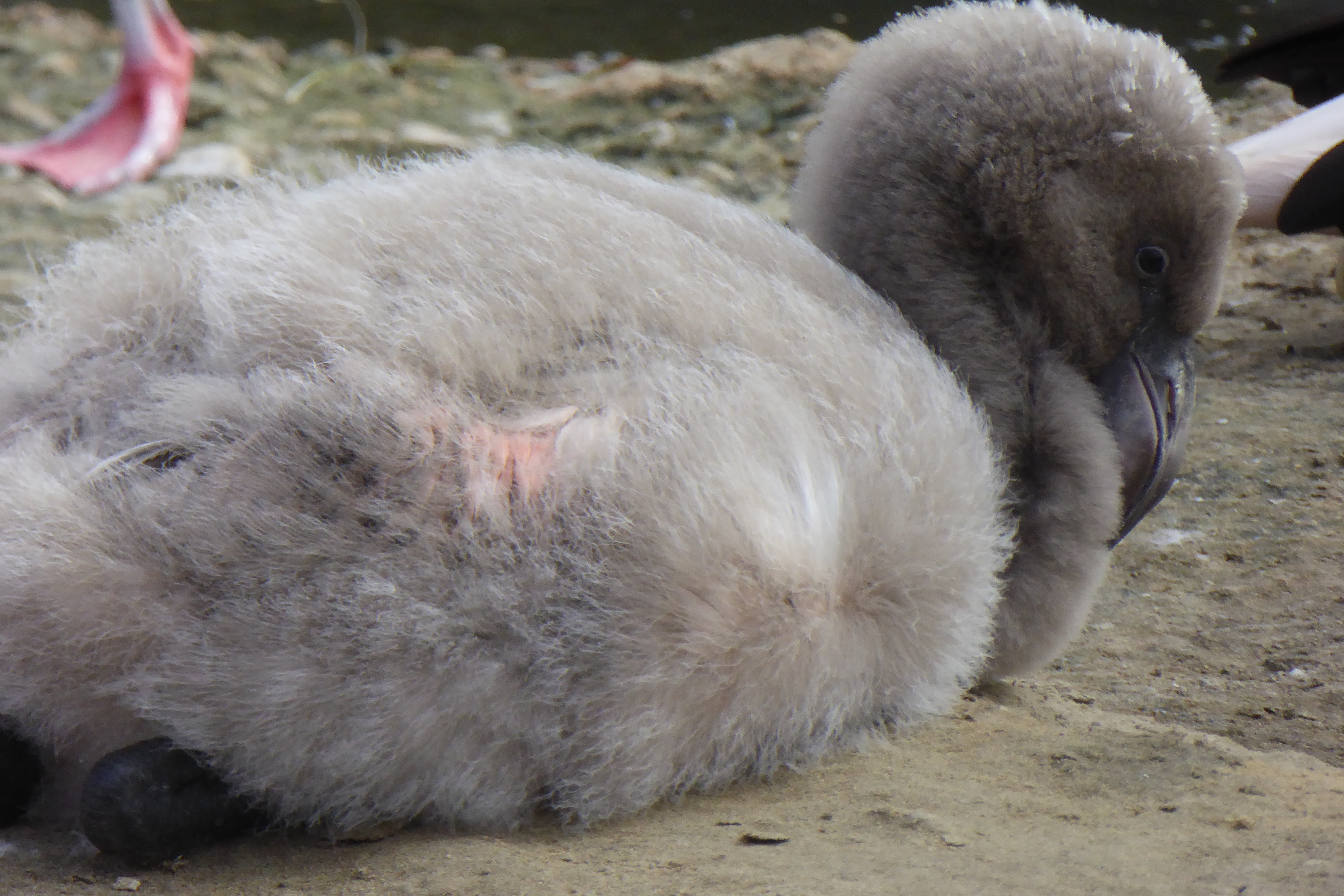 Spot the first pink feather...
Spot the first pink feather...
So visitors to WWT Slimbridge and other centres that hold these wonderful birds can have a go at working out how old a flamingo is from the colours of its plumage. If you want to keep track of the developing foster chicks, for example, here's a handy guide in the photo below.
On the far right is a flamingo chick that hatched earlier this year and wearing its first set of grey/brown "proper" feathers. By proper feathers I mean those that are the ones that replace the fluffy down they wear at hatching. On the far left is a "teenager", a bird bigger than the grey yearling but not quite wearing correct adult dress, so around 18 months to two years old. Legs, beaks, heads and necks are the last to change colour and this bird still shows lots of darker "baby feathers" on its wings. Compare this bird to the adult, who is in the middle, and both have the same body shape but the adult is pink in all the right places. It will take up to five years for a young flamingo to achieve the complete pink makeover. And even then, flamingo colour can keep getting brighter as they age and mature.
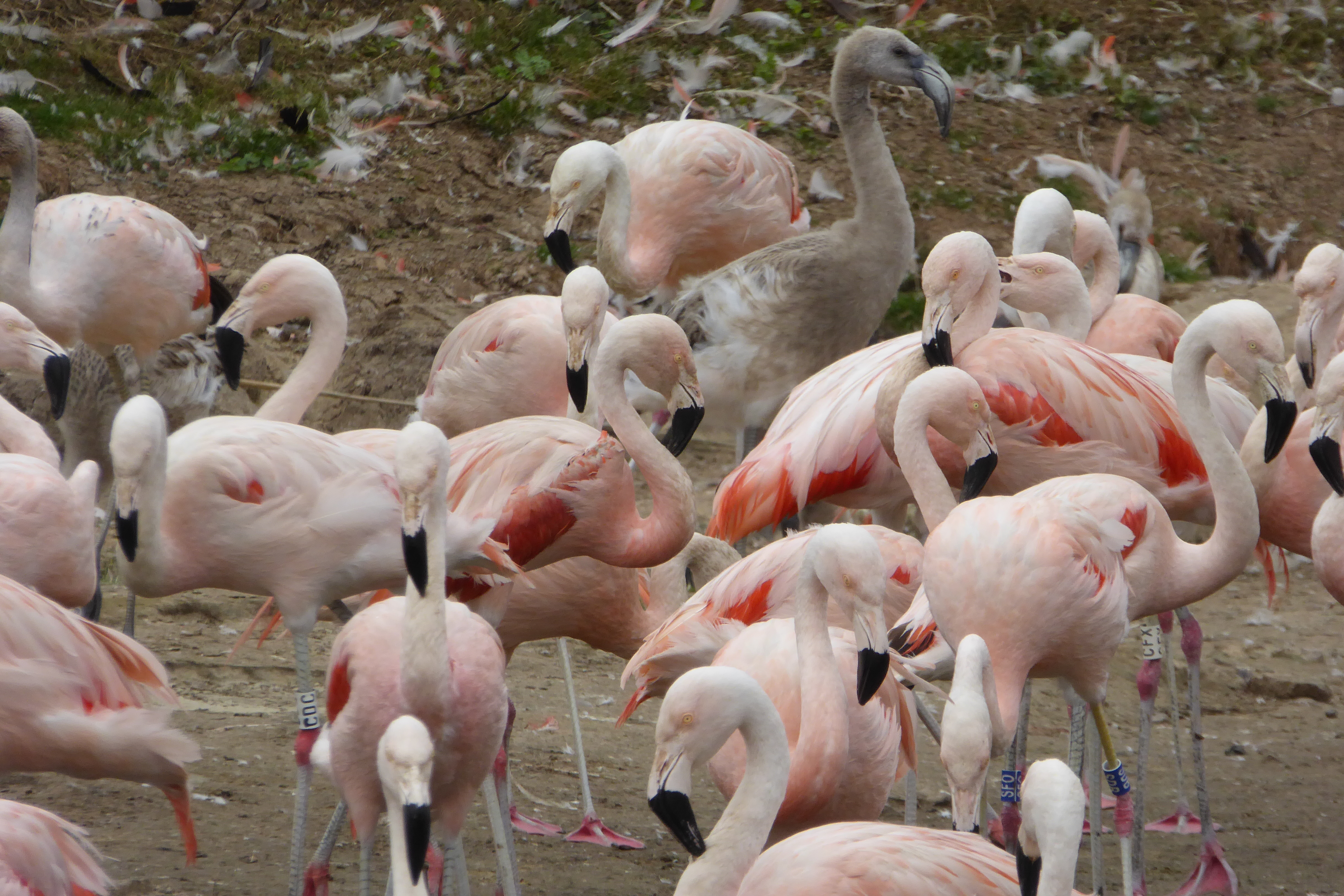 In a sea of pink... one of the class of 2018 will take several years to have the right amount of pink and red in the right places.
In a sea of pink... one of the class of 2018 will take several years to have the right amount of pink and red in the right places.
Chicks in the other flocks are growing up big and strong too. In the photo below, a seemingly worn-out greater flamingo dad stands over a well-grown chick. The parents put a lot of effort into their chick-rearing responsibilities and it is not unusual to them not looking at their best when the breeding season comes to a close. But as their youngsters learn to feed itself and can filter flamingo pellet from the water, the adults will start to regain their more flamboyant streak and be back brightly in the pink after their next moult. Phil and Sparky are also expert in knowing how much food to provide- upping the amount of flamingo pellet so that adults can meet their own needs as well as those their chick.
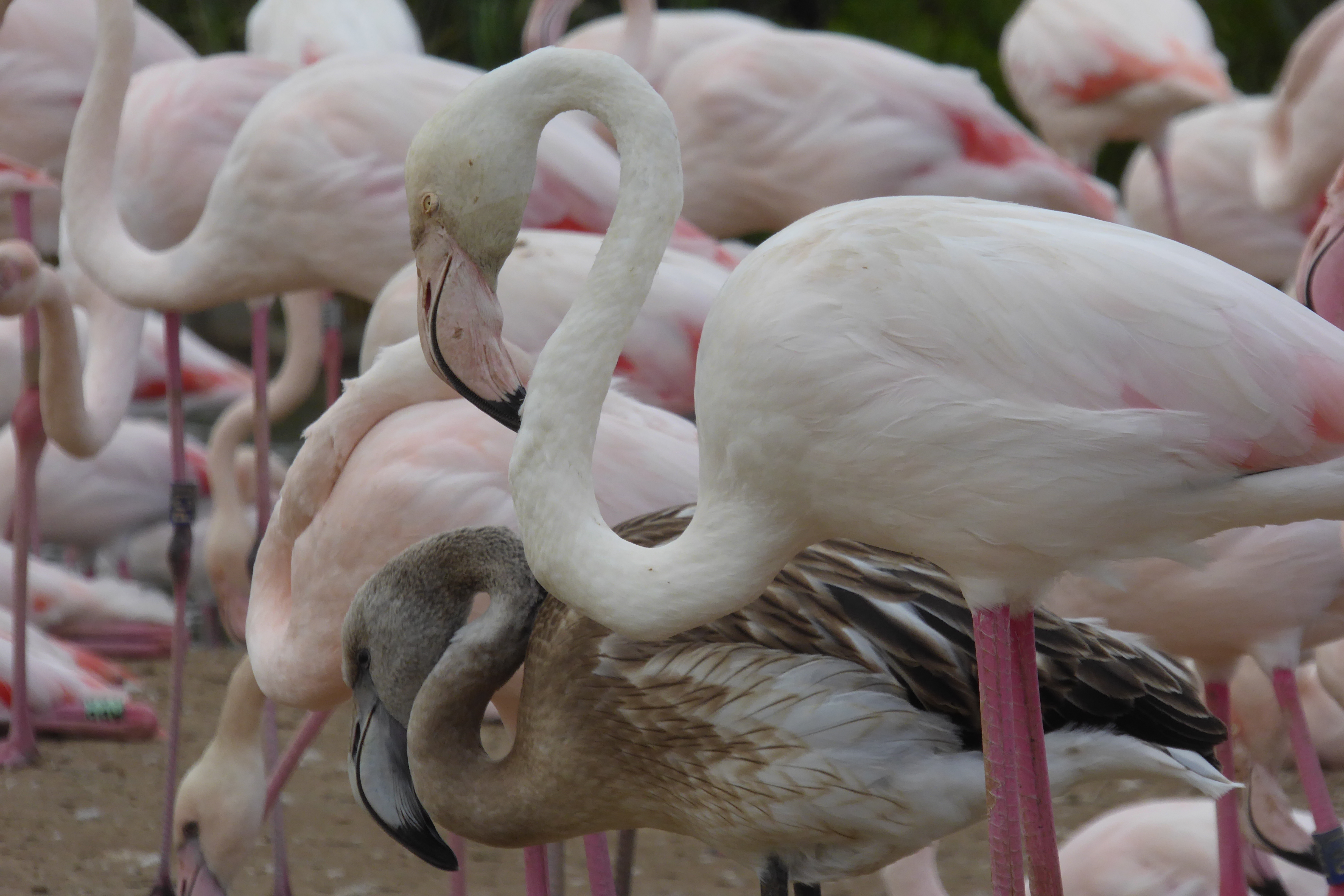 Such a long way to grow up requires a lot of hard work and attention from mum and dad.
Such a long way to grow up requires a lot of hard work and attention from mum and dad.
The care given by mum and dad is especially important in autumn when the weather can turn more stormy. Flamingos, like all birds, are not a fan of strong winds. They would rather not have their feathers ruffled, and wind up their tails makes them edgy. You will often seen flocks of flamingos standing facing the same way, into the wind and hunched down to reduce the chance of being blown over. Wind-swept plumage is less good at insulation, so a bird saves energy by facing into the wind and keeping its feathers sleek.
See this in action in the clip below:
For smaller species, like the delicate lesser flamingos in the photo below, crowding together and reducing squabbling means birds can remain more comfortable in blowy conditions.
When it comes to the younger chicks, it is easier to sit down and remain squat on the floor. And if you snuggle up next to your parent, then that is even better... (see the clip below) :-)
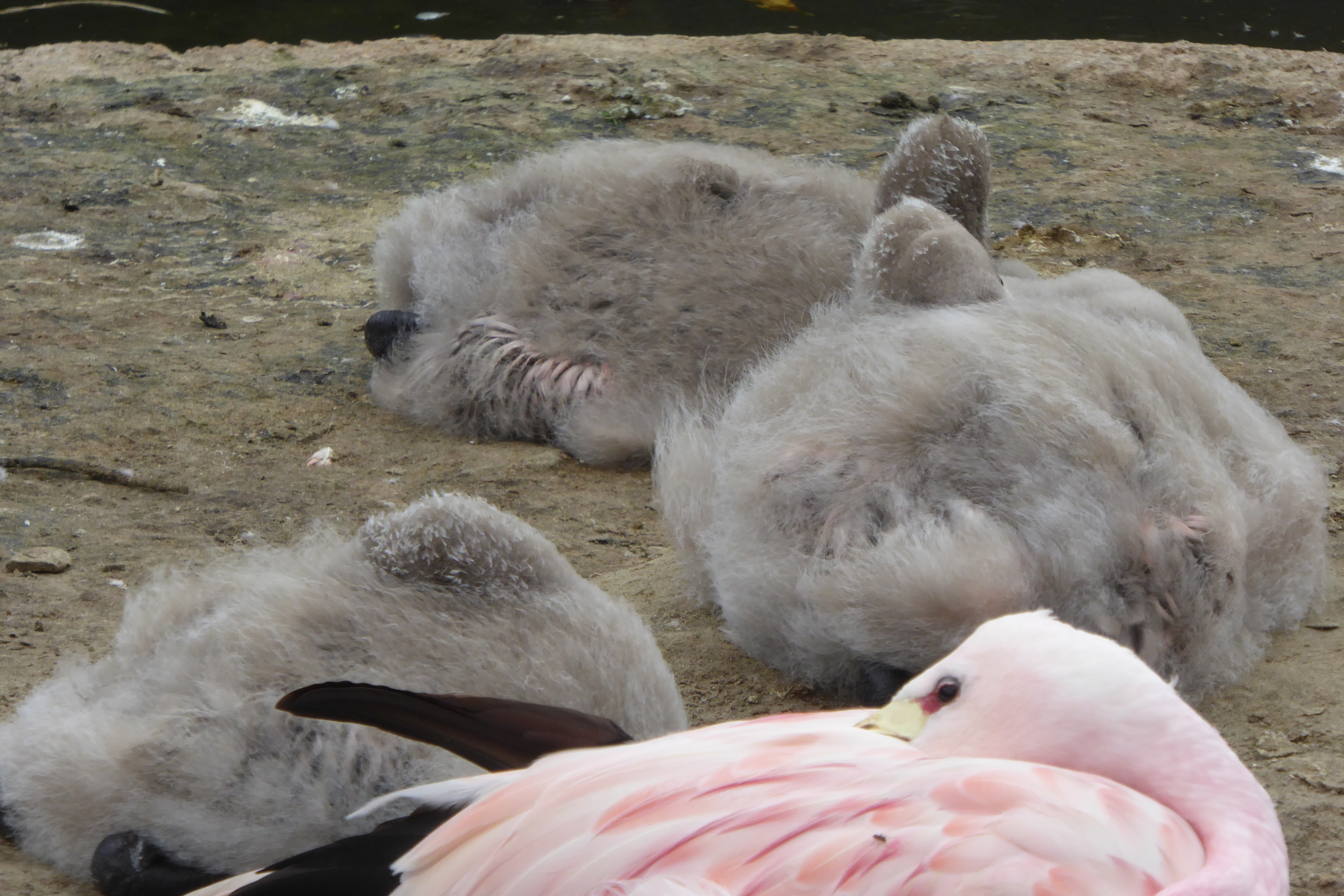 Cuddly and snuggly. How to sit out the storm when you're still small.[/caption]
Cuddly and snuggly. How to sit out the storm when you're still small.[/caption]
Of course, if it's too windy, the birds can go inside and be kept safe and warm until the storm passes. And during this week, the flamingos could have gone inside if they had wanted, but they all chose to remain out in the elements. Perhaps their ways of coping with the wind meant they all felt fine?
I will leave you with this last image of the huddled together Chilean flock (some good photo opportunities this week of getting to see birds all rammed together whilst sheltering from the wind) because it will link to the story I will tell in my next Flamingo Diary post. Lots of different colours... a parent bird in the middle (and the head and neck of one on the right) compared to birds moulting through new feathers that are much pinker (bird on the left with the pale head), and birds that remained bright pink so were not parents this year (the head and neck of the bird at the front right). The care of flamingo feathers is a full time job- something that one of my MSc students investigated this year. What did she find out? More next time!
